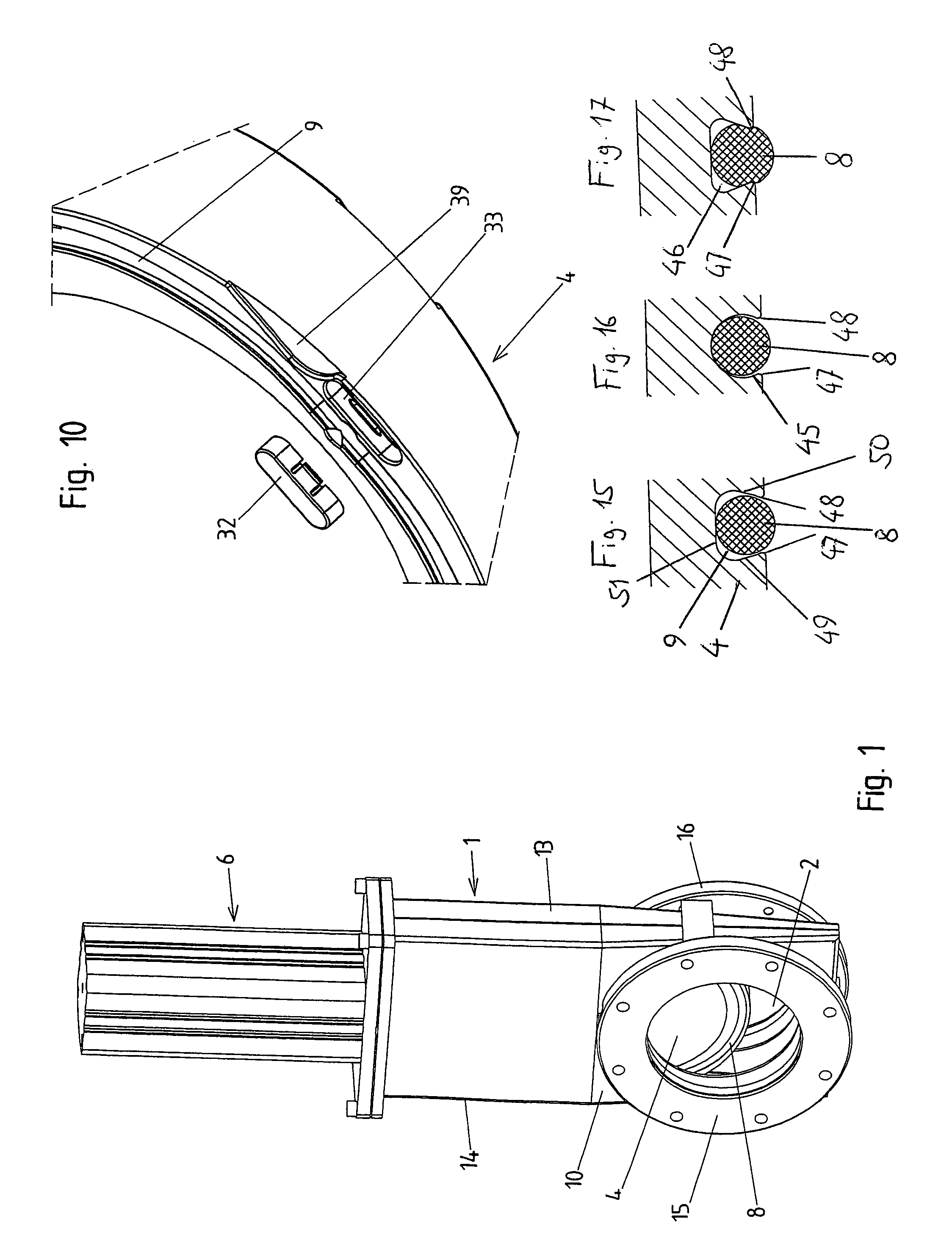Vacuum valve
a vacuum valve and valve body technology, applied in the direction of valve arrangements, lift valves, check valves, etc., can solve the problems of inability to complete the closing (i.e. sealing) of the valve, the use of sealing rings with relatively complicated shapes, and the disadvantages of shear stress acting on the seal, etc., to achieve small nominal widths and simple manners
- Summary
- Abstract
- Description
- Claims
- Application Information
AI Technical Summary
Benefits of technology
Problems solved by technology
Method used
Image
Examples
Embodiment Construction
[0036]An embodiment example of a vacuum valve according to the invention is shown in FIGS. 1 to 13. The vacuum valve comprises a valve housing 1 with a valve opening 2 having a longitudinal axis 3. A valve plate 4 is mounted so as to be displaceable in a straight line (i.e., linearly) in the valve housing 1. To this end, the valve plate is arranged at a valve rod 5 which is displaceable in a straight line by an actuating device 6, shown only schematically, in direction of its longitudinal axis. The actuating device (actuator) 6 can be formed, for example, by a pneumatic piston-cylinder unit. Actuating devices having electric motors, for example, could also be used. Suitable actuating devices for axial displacement of the valve rod 5 are known and need not be described in detail within the scope of this application.
[0037]A movement of the valve rod 5 and of the valve plate 4 need only be carried out by the actuating device in one straight-line displacement direction 7. This displacem...
PUM
 Login to View More
Login to View More Abstract
Description
Claims
Application Information
 Login to View More
Login to View More - R&D
- Intellectual Property
- Life Sciences
- Materials
- Tech Scout
- Unparalleled Data Quality
- Higher Quality Content
- 60% Fewer Hallucinations
Browse by: Latest US Patents, China's latest patents, Technical Efficacy Thesaurus, Application Domain, Technology Topic, Popular Technical Reports.
© 2025 PatSnap. All rights reserved.Legal|Privacy policy|Modern Slavery Act Transparency Statement|Sitemap|About US| Contact US: help@patsnap.com



